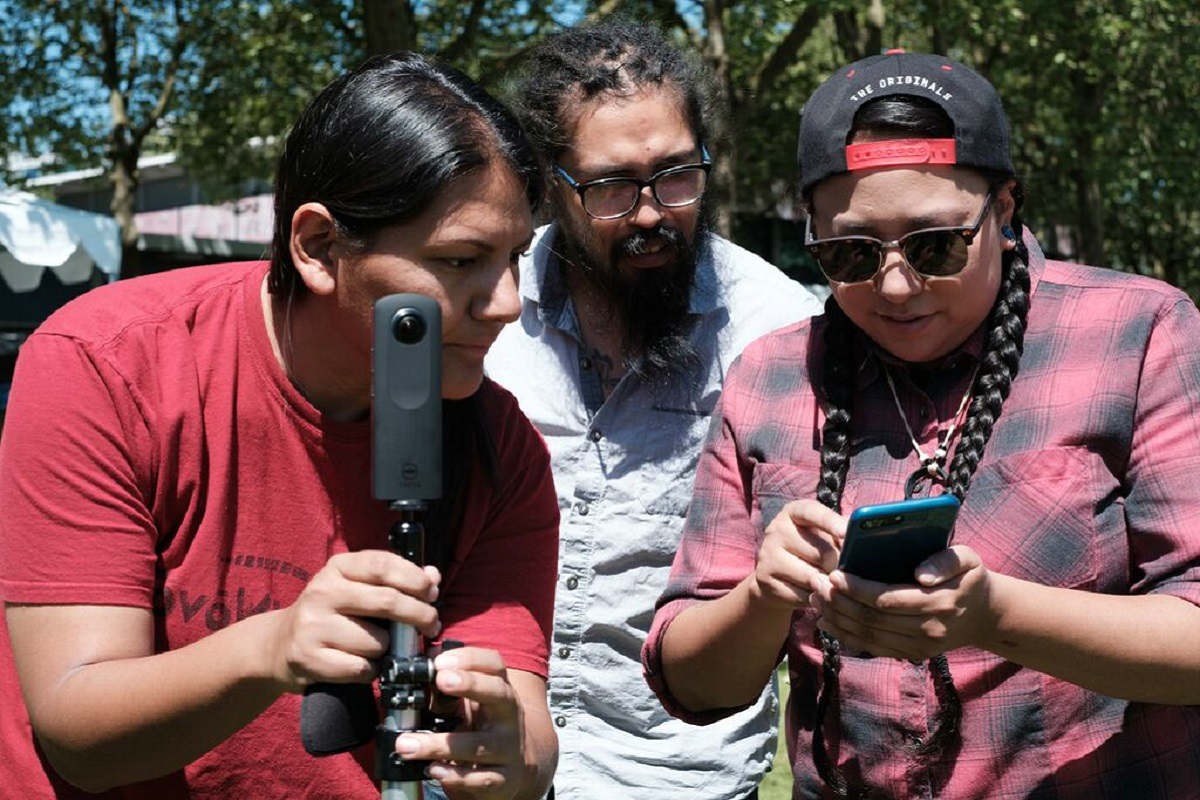
Seattle rests firmly on the land of Coast Salish, and Tracy Rector wants to make sure tribal voices are heard through film.
“It is racism that underlies the major social and economic problems affecting communities of color,” said Rector, a mixed-race Choctaw/Seminole filmmaker, community organizer and media activist. “It is racism that has segregated Native Americans on reservations and many people of color in inner-city ghettos.”
Rector is a prominent voice and leader within the Seattle arts community. Having made over 400 films, she currently sits as a Seattle Arts Commissioner where she serves as an advocate for racial and social justice.
Her production company, Longhouse Media, since 2015 has partnered with the Seattle International Film Festival on the 4th World Indigenous Media Lab to train indigenous filmmakers from across the U.S. and Canada.
The workshop will help filmmakers develop knowledge, skills and professional opportunities this weekend, May 25 to 28. This year the focus is on all-women indigenous filmmakers.
The weekend programming includes seven feature films showing at SIFF, and a short film program of all-female indigenous filmmakers, “Through Her Indigenous Eyes.”
SIFF is also presenting an all-female panel discussion with indigenous activists at the Seattle Central Library on May 26, which will include a showing of “Dawnland.”
“Especially for Native women in media, we represent such a minute number that it just seemed like a great opportunity this time to focus on empowering women,” said Rector, who has partnered with SIFF on training programs since 2005.
Representation lags in all aspects of film. Native Americans claimed less than one percent of all top film roles in 2016. Behind the camera, just over one in ten film directors were people of color, according to UCLA’s Hollywood Diversity Report. Fewer than one out of ten film directors were women in that same year.
The media lab is an intensive, three-day experience offering filmmakers the chance to work with experts, trainers and industry professionals, Rector said. This year, with support from Seed & Spark, NBCUniversal Talent Infusion Programs, and ITVS, the workshop will focus on pitching stories and writing treatments.
“Each year I look around and I try to figure out what’s happening in the media landscape and think about what could best serve our Indigenous filmmaker community,” Rector said.
In order to find the 10 to 12 filmmakers that form a cohort each year, Rector curates from film festivals across U.S. and Canada, talking to filmmakers about their interest level in continuing education and training. The result is filmmakers from far and wide making their way to Seattle.
Once they get here, the work with industry professionals outside the Native community is invaluable, Rector said. It gives emerging and mid-career filmmakers alike the opportunity to lessen potential discomfort working with outsiders.
“The Native filmmakers have a chance to learn and become comfortable with decision makers in the field, and the decision makers learn more about Native culture and how to work with Native filmmakers,” she said.
“Dawnland” documents the Truth and Reconciliation Commission led by Maine-Wabanaki REACH, which focused on the damage done by the federal boarding schools that Native people in Maine were forced to attend.
“‘Dawnland’ is about Wabanaki people having the opportunity to be heard and seen and share their voices and stories that have been ignored for so long,” said Adam Mazo, the director and producer of the film. There are far too few opportunities for people who are being oppressed to have a platform.”
Through the film lineup, the panel, and the 4th World Media Lab, SIFF is continuing its strides to raise the platform it provides to indigenous artists.

“I’ve been working with SIFF with 13 years, and building a relationship with them about being a leader in the industry in recognizing the need to work with and support Indigenous filmmakers,” Rector said. “SIFF is a part of only a few major film festivals that are actively working with Indigenous storytellers, which is huge.”
By offering this platform, it puts SIFF and Seattle on the map of being a city where filmmakers can grow, she said. It forges future creators and empowers Indigenous voices.
“Tracy, with her work with us as an impact producer, has helped us to get the word out that this is Indigenous land, wherever we are,” Mazo said. “We hope that people will take away a message that telling the truth matters and that Native people are still here, particularly in the east.”
SIFF took a major step in that direction last year by created a slide that plays before all its film screenings reminding audiences that they are on Indigenous land.
“I think that’s huge,” Rector said. “We need allies in that way to create more awareness and understanding of true history and they are really willing to work with me in that way.”
It is vital to acknowledge the role of Native land and Indigenous people in the history of this country and this region. Highlighting Native filmmakers and artists shines a light on the inequities faced by Native Americans, historically and today, across the Pacific Northwest and the country at large.
But art can’t serve as an equalizer if it doesn’t have exposure. The partnership between Rector and SIFF is elevating that exposure across the Seattle art community.
“Indigenous history and culture impacts all of us living on the land of the First Peoples, we find that non-Natives are eager to understand more about the people and the history of this place,” Rector said. “Building relationships will lay the foundation for the work needed with our allies in changing structural racism.”
Corrections: An earlier version of this story incorrectly identified Seed & Spark and omitted the name of the photographer. The story has also been updated to clarify that “Dawnland” is part of a panel presentation and that Rector has partnered with SIFF on training programs since 2005.

